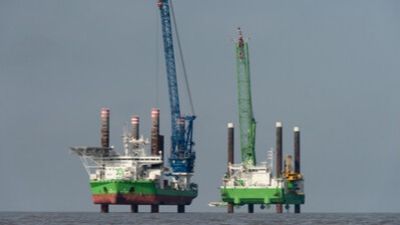What the huge ships 'Neptune' and 'Sea Challenger' are doing in Somerset

Two huge vessels are now in place on the Somerset coastline to carry out off-shore work at Hinkley Point C.
The two 'jack-up vessels' - called Sea Challenger and Neptune - will be used to install six vertical shafts which are key components in the nuclear power station's cooling system.
The shafts will be installed at a depth of more than 20 metres before miners will dig a horizontal connection between them and six miles of tunnels.
It's the first part in linking the tunnels to 'intake and outfall heads' - a set of 5,000-tonne structures which were lowered onto the seabed last summer and will eventually circulate water to the two nuclear reactors.
Both the Sea Challenger and the Neptune have their own four 'legs' to raise themselves above sea level, meaning they are not impacted by waves and currents.
The Sea Challenger is 132 metres long - which is longer than a football pitch - while the Neptune is 60 metres long. Between them, they can lift 1,500 tonnes.
Jonathan Smith, who is the area delivery director said: “This is one of the final stages of our offshore operations, which will see teams from EDF, Balfour Beatty and New Wave Solutions working together to deliver yet another incredible feat of engineering.
"The cooling water system is critical to the power station – which will help Britain fight climate change and achieve stronger energy security.”
Balfour Beatty project director Roger Frost said: “The arrival of Neptune and Sea Challenger marks another significant step forward in the successful delivery of the first new nuclear power station in the UK for over 20 years.
“We now look forward to utilising our unique capability and unrivalled expertise to continue with the linking up of the six miles of tunnels which are buried below the Bristol Channel – this is another important chapter in the offshore works required for Hinkley Point C’s critical water-cooling system.”